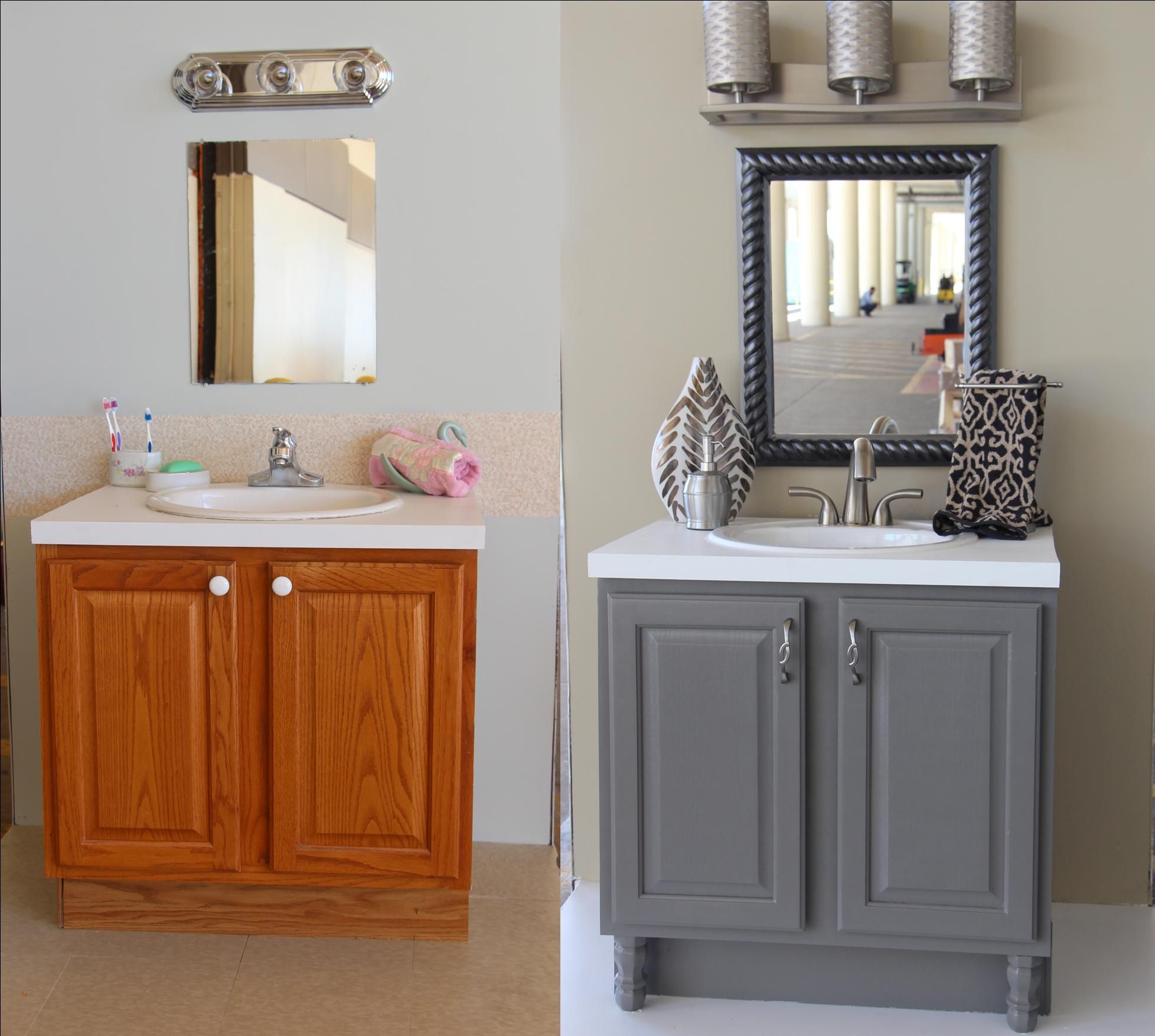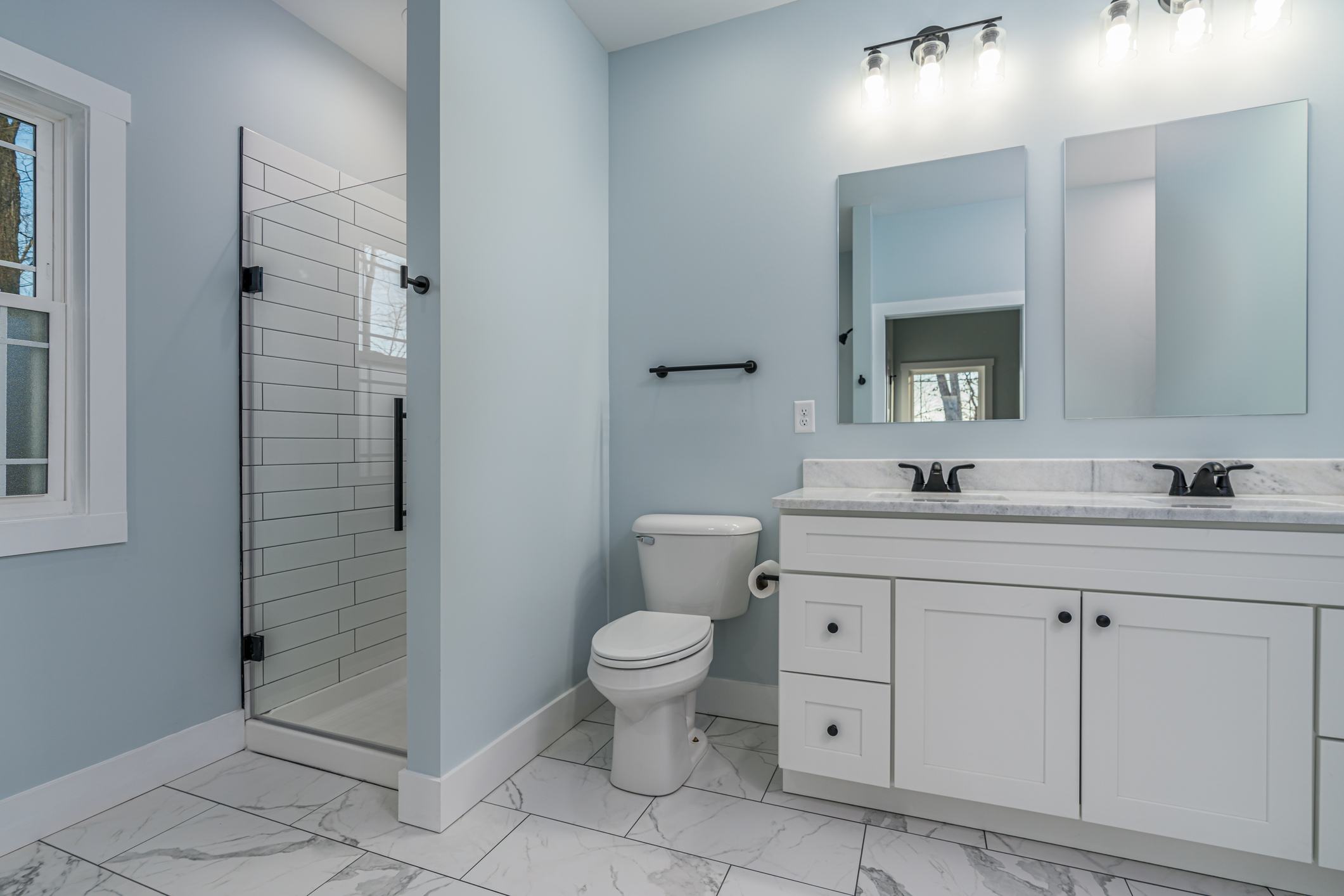Assessing Damage and Planning
Before you start restoring your bathroom cabinets, you need to assess the damage and plan your approach. This step will help you determine the best course of action and ensure you have the necessary tools and materials for a successful restoration project.
Identifying the Extent of Damage
The first step is to carefully examine your bathroom cabinets to identify the extent of damage. Look for signs of wear and tear, such as scratches, dents, chips, water damage, and loose hinges.
- Scratches and Dents: These are common signs of wear and tear. Minor scratches and dents can be easily repaired, while deeper ones may require more extensive work.
- Chips: Chips in the cabinet finish can be unsightly. They can be repaired with wood filler or epoxy.
- Water Damage: Water damage can cause warping, rotting, and mold growth. This type of damage requires immediate attention and may require replacing the affected parts.
- Loose Hinges: Loose hinges can make it difficult to open and close the cabinet doors. They can be tightened or replaced.
Determining the Type of Restoration Needed
Once you have identified the extent of damage, you need to determine the type of restoration needed.
- Refinishing: If the damage is minor, you may be able to restore the cabinets by refinishing them. This involves sanding the surface, applying a new stain or paint, and sealing it with a protective finish.
- Repairing: For more significant damage, such as dents, chips, or water damage, you may need to repair the cabinets. This can involve filling in cracks or holes, replacing damaged parts, and sanding and refinishing the surface.
- Replacing: If the damage is extensive or the cabinets are beyond repair, you may need to replace them. This is the most expensive option but will give you a completely new set of cabinets.
Creating a Budget and Timeline
After you have determined the type of restoration needed, it is important to create a budget and timeline for the project. This will help you stay on track and avoid unexpected expenses.
- Budget: Consider the cost of materials, tools, and any professional labor you may need. For example, a refinishing project might cost a few hundred dollars, while replacing cabinets could cost thousands.
- Timeline: Estimate how long it will take to complete the project. A refinishing project can be done in a weekend, while a more extensive repair or replacement project could take several weeks.
Gathering Necessary Tools and Materials
The final step in planning your restoration project is to gather the necessary tools and materials. This will depend on the type of restoration you are doing.
- Refinishing: You will need sandpaper, wood filler, stain or paint, brushes, rollers, and a protective finish.
- Repairing: You will need wood filler, epoxy, screws, hinges, and possibly a drill.
- Replacing: You will need to purchase new cabinets and any necessary hardware.
Cleaning and Preparation: How To Restore Bathroom Cabinets

How to restore bathroom cabinets – Before you can start painting or staining your bathroom cabinets, you need to thoroughly clean and prepare them. This will ensure that the new finish adheres properly and lasts longer.
Thorough Cleaning
Cleaning bathroom cabinets is essential for removing dirt, grime, and mildew, which can affect the adhesion of the new finish.
- Start by removing any loose dirt or debris with a vacuum cleaner or a damp cloth.
- Use a mild detergent and warm water to clean the cabinets thoroughly. Avoid harsh chemicals, as they can damage the cabinet surfaces.
- For stubborn stains, you can use a baking soda paste or a commercial cleaner specifically designed for mildew removal.
- Rinse the cabinets thoroughly with clean water and allow them to dry completely before proceeding to the next step.
Removing Hardware
Removing hardware, such as handles and hinges, will make it easier to access all surfaces of the cabinets for cleaning, sanding, and painting.
- Use a screwdriver to remove all screws holding the hardware in place.
- Place the hardware in a safe place to prevent damage or loss.
Sanding
Sanding the cabinets will create a smooth surface for the new finish to adhere to. It will also help to remove any imperfections or rough spots.
- Start with coarse-grit sandpaper (80-120 grit) to remove any major imperfections or old finishes.
- Gradually move to finer-grit sandpaper (150-220 grit) to smooth out the surface.
- Sand in the direction of the wood grain to avoid scratches.
- After sanding, use a tack cloth to remove any dust or debris.
Applying Primer
Applying a primer will ensure proper adhesion of the new finish. It will also help to seal the surface and prevent the new finish from being absorbed by the wood.
- Choose a primer that is compatible with the new finish you plan to use.
- Apply the primer using a brush, roller, or spray gun.
- Allow the primer to dry completely before proceeding to the next step.
Restoration Techniques

Now that you’ve assessed the damage and prepared your cabinets, it’s time to delve into the actual restoration process. There are three main approaches: refinishing, repairing, and replacing. Let’s explore each technique in detail.
Refinishing
Refinishing involves stripping the existing finish and applying a new one. This can dramatically transform the look of your cabinets, giving them a fresh, updated appearance.
The choice of paint or stain depends on the desired aesthetic and the existing cabinet material.
- Paint: Offers a wide range of colors and finishes, making it ideal for creating a bold statement or achieving a modern look. Popular options include:
- Latex paint: Easy to apply, dries quickly, and offers good durability.
- Oil-based paint: Provides a harder, more durable finish but takes longer to dry and emits strong fumes.
- Epoxy paint: Highly durable and moisture-resistant, making it a great choice for bathroom cabinets.
- Stain: Enhances the natural grain of the wood, creating a warm and inviting look. Stain options include:
- Oil-based stain: Penetrates deeply into the wood, providing rich color and a natural finish.
- Water-based stain: Dries quickly and emits fewer fumes, making it a more environmentally friendly choice.
Applying paint or stain evenly and smoothly requires careful preparation and technique.
- Sanding: Smooth out any imperfections and create a uniform surface for the new finish.
- Priming: Provides a base for the paint or stain to adhere to and helps prevent the wood from absorbing too much color.
- Thin coats: Apply multiple thin coats of paint or stain, allowing each coat to dry completely before applying the next. This ensures a smooth, even finish.
- Proper tools: Use a high-quality brush or roller for a professional finish.
Once the paint or stain is applied, it’s essential to protect it with a durable and water-resistant coating.
- Polyurethane: A clear, protective coating that creates a durable, water-resistant finish.
- Lacquer: A high-gloss finish that provides excellent protection and a beautiful shine.
- Epoxy sealant: A highly durable and moisture-resistant coating that is ideal for bathroom cabinets.
Repairing, How to restore bathroom cabinets
Minor damage to cabinet doors, drawers, and frames can often be repaired without replacing the entire cabinet.
- Damaged cabinet doors:
- Cracks and holes: Patch and fill with wood filler, sand smooth, and refinish to match the existing finish.
- Loose hinges: Tighten screws or replace worn-out hinges.
- Chipped or scratched surfaces: Sand the damaged area, apply wood filler, and refinish to match the existing finish.
- Damaged drawers:
- Loose or broken drawer slides: Replace the slides with new ones.
- Cracked or broken drawer fronts: Repair or replace the drawer front.
- Damaged drawer bottoms: Replace the drawer bottom with a new one.
- Damaged frames:
- Loose or broken cabinet doors: Tighten screws or replace the hinges.
- Cracked or broken frames: Patch and fill with wood filler, sand smooth, and refinish to match the existing finish.
Replacing broken hinges, handles, and other hardware is a straightforward process.
- Remove the old hardware: Unscrew the old hardware using a screwdriver.
- Install the new hardware: Align the new hardware in the desired location and screw it into place.
Patching and filling cracks or holes in cabinets can be done using wood filler.
- Clean the area: Remove any dust or debris from the crack or hole.
- Apply wood filler: Fill the crack or hole with wood filler, using a putty knife to smooth it out.
- Let it dry: Allow the wood filler to dry completely.
- Sand smooth: Sand the area smooth to create a seamless finish.
- Refinish: Refinish the area to match the existing finish.
Replacing
If the damage to your bathroom cabinets is extensive or the cabinets are simply outdated, replacing them may be the best option.
- Types of bathroom cabinets: Bathroom cabinets come in a wide variety of styles, materials, and sizes. Some popular options include:
- Vanity cabinets: Offer storage space for toiletries and often include a sink.
- Medicine cabinets: Provide storage for medications and other bathroom essentials.
- Linen cabinets: Offer storage for towels, linens, and other bathroom items.
- Removal process: Removing old cabinets involves disconnecting any plumbing or electrical connections, unscrewing the cabinets from the wall, and carefully removing them from the bathroom.
- Installation process: Installing new cabinets involves attaching them to the wall, connecting any plumbing or electrical connections, and securing them in place.
Choosing the right size and style of cabinets is crucial for maximizing storage space and creating a cohesive look in your bathroom.
- Measure the space: Carefully measure the available space to ensure the new cabinets will fit.
- Consider your needs: Think about the amount of storage space you need and the types of items you want to store.
- Choose a style: Select a style that complements the overall design of your bathroom.
